BlockChain & Smart Contact
Blockchain Technology & How Distributed Ledger Accounting Works

All About Blockchain Technology
The years of 2017 and 2018 could always be remembered as the years that Bitcoin, Ethereum, and the rest of the cryptocurrency industry entrenched themselves firmly as part of the mainstream consciousness. These are the years that the mainstream’s attention was capture by this disruptive industry as a result of its huge speed of growth and the seemingly unlimited potential it offers for our day to day lives.
The blockchain is a technology with a growth that has never before witnessed in the history of business and investment circles. And despite what negative people keep saying about it, it keeps climbing in leaps and bounds.
Cryptocurrencies are however, only a small fraction of the true potential for this emerging technology. As there is there no sector of business or aspect of life that will not come under its influence in some way or another. From health care to insurance, finance, to self-driving vehicles, everything we do and know today will benefit from the solutions that this industry promises everyone.
Behind the sensationalism and surge of cryptocurrencies is the platform that makes all of this possible. Be it cryptocurrencies, or anything else. Everything is powered by what could be mankind’s greatest achievements to date: the blockchain.
The blockchain is the foundation for a new rise of industries and ways of doing business. The blockchain is what helps to power giants such as Bitcoin and Ethereum and usurp monopolies in every sector and give control back to the users.
The blockchains potential is unlimited, and in this article we will go over what the blockchain is and what features it has, as well as the industries that can benefit from its implementation on a wider scale, as well as what the future could hold for this marvel of technology.
What is Blockchain Technology?

The blockchain can be explained as a decentralized ledger of adding, verifying, and then recording other transactions between peers in a transparent and irreversible way. The blockchain is the first manmade creation that is impossible to break or sabotage, or change by any single human entity once it is implemented.
The blockchain first came in to existence by a person or group of people who goes by the name of Satoshi Nakamoto. This was to be the first system on which anything of value, be it currencies or even tokenized assets of non-liquid assets can be recorded between people in a fast and efficient manner.
The blockchain does not adhere to borders or a bureaucratic red tape as it can be used to send anything of value between individuals without the use of intermediaries, with no regard for borders or statuary regulations.
The blockchain has no single pint of failure, nor a beginning or an end, as the nodes in the blockchain or computers that comprise it as spread all over the world and has so far stopped every attempt of sabotage from online criminals and world governments.
Features that Make Up the Blockchain Technology

The blockchain has a number of different features that makes it a unique invention and a near limitless scope for growth and scalability.
Some of the most important features of the blockchain include the following.
Decentralization
Decentralization is perhaps the most important feature of blockchain technology, as this is the core idea that bought about its inception. The blockchain in all of its forms was created with the end goal of taking the power from service providers who turned whole industries into backyards and give this power back to the people.
The blockchain is an open ledger that works to accept, verify and then add transactions with no central control or building where its computers resides. It is this technology that gives each user with a computer access to participate and become a stakeholder in any service or industry.
This decentralized design is created in such a way that for any change to be made, each member of the network must arrive at an agreement about the change that is being proposed.
The genius of this new service provision is that it is inherently democratic and protects the interest of the majority at all times.
Immutability
Another important feature of blockchain technology is that it is entirely immutable as part of its design. This means that once a transaction has been accepted, verified, then stored on the blockchain, this cannot be undone by any entity, as not even the creator of the blockchain can change the values of a transaction.
The fact that the blockchain is immutable is one of the important reasons for why it remains as one of the most reputable new technologies. Even though it is not issued or dispensed by any government or central authority, its users can relax knowing that they cannot be tampered with by any party once it is completed.
The permanency of transactions on the blockchain is its key attraction that has led to its widespread adoption, as for the first time in history, people have created something that cannot be altered once it is put into force.
Security
Another key aspect of the blockchain, and something that keeps driving its popularity through the roof is that it cannot be replicated in centralized systems. Service providers and retail giants to cloud computing firms often suffer from painful attacks and witness their data being stolen from hackers. This is due to the fact that centralized systems give an opening for these online criminals through a single point of failure.
While with blockchain technology, it is multi-faceted and has no single point of failure, which translates into the inability of hackers to break into systems, no matter how skillful they are.
Super Computational Power
The blockchain technology comprises a great amount of the world’s total computational power, deployed in the 21st century. Blockchains like Bitcoin and Ethereum contain great amounts of power, so much so that even governments and large corporations cannot compete.
The result is that blockchain technology is immune from any attempt by a regulatory entity in the world to shut the networks down. The nature of millions of computers dispersed throughout the world, all pool their power together into a single network gives it an edge over anything unlike it.
These blockchains are so huge that it can power other cryptocurrencies such as Bitcoin and the applications that are built on top of it.
Applications of Blockchain Technology

It could be said that no bit of technology is worth anything until people start using it with a practical use case for others.
Some of the most obvious applications of the blockchain technology include the following:
Finance
Finance was the very first application in which blockchain tech made its introduction to the market. This is where it was introduced a stateless, borderless, and self-sustaining virtual currency in the form of Bitcoin.
The typical financial industries in the world at the beginning considered Bitcoin nothing more than an idea for geeks that would only make so much progress, and that it was an experiment that does doomed to fail.
Around 9 years later all of those assumptions have been proven to be untrue, as the industry has grown from obscurity to be worth 500 billion dollars at today’s current evaluation. The financial sector is now at full force as cryptocurrencies or the alternative financial industry is now quickly gaining traction.
This is because it allows people a fair participation in creating additional value for themselves. It provides people a secure, scalable, and economic model of transferring value between parties without the need for middlemen or adhering to the usual standards of business.
Key plays in the field of cryptocurrencies include Bitcoin, Litecoin, Monero and a host of others.
E-Commerce

Another important sector of modern life that the blockchain seeks to usurp is e-commerce. The present state of e-commerce corporations are plagued with a number of problems that includes a limited service to certain areas or regions of the planet, to serious security risks they are exposed to that sees personal and payment information of its users being taken by criminals.
The blockchain helps to create a decentralized e-commerce platforms that deals with the problems of monopolies that these companies keep facing with.
Through the use of blockchain technology, the middleman is taken out of the picture with transactions being entirely peer to peer, which also makes transactions cheaper.
This also gives users the option for making their payments without ever using their credit or debit card, which affords an additional layer of protection.
Energy
The way that we consume and use energy either at home or in the business world has come under intense review over the last few years, which is the result of an increased awareness for the danger posed by climate change on our precious planet.
The monitoring of carbon footprints have come with many scandals and accusations of doctoring data between countries. On the home front we also contend with the reality of manually tweaking our electricity consumption to suit the status quo of the environment.
With the use of blockchain and IoT devices, all these nightmares and problems that modern energy consumption and footprint mechanisms can be solved.
Countries now have a neutral and real-time monitoring of carbon emissions, while energy users at home have Smart Energy tools that can make energy bills less expensive and consumption for sustainable for the environment.
One example of a startup in this space is named GRID, which promotes smart-energy grids in the modern home.
The Future of the Blockchain

The blockchain is a technological revelation that will shape the way our lives are lived on planet Earth.
In less than 10 years it has risen from the ranks of obscurity to worldwide acclaim and influence that has not been seen since the advent of the internet.
The blockchains impetus is bringing awareness to people about what is possible, and is unmatched by any technology that has come before it. It offers everyone a glimpse into its potential, which has for far been an exclusive feature of giants such as Google, Facebook and Amazon.
The benefits for this new technology are very obvious, and it has already begun shaping the way that we live and interact tin the world. This is likely to continue for the foreseeable future.
There are so many problems that almost every sector of business faces for so long that many are content to quietly accept, and the blockchain with its decentralized and democratic nature could be a solution to those problems.
Despite what the naysays says, the blockchain technology is here to stay with its immensely powerful and useful structure, meaning that whether governments and regulatory bodies like it or not, the blockchain is here to stay, as there is no way of rolling its progress back, or shutting it down.
BlockChain & Smart Contact
Blockchain Distributed Ledger Technology: The Answer to Banking System Issues
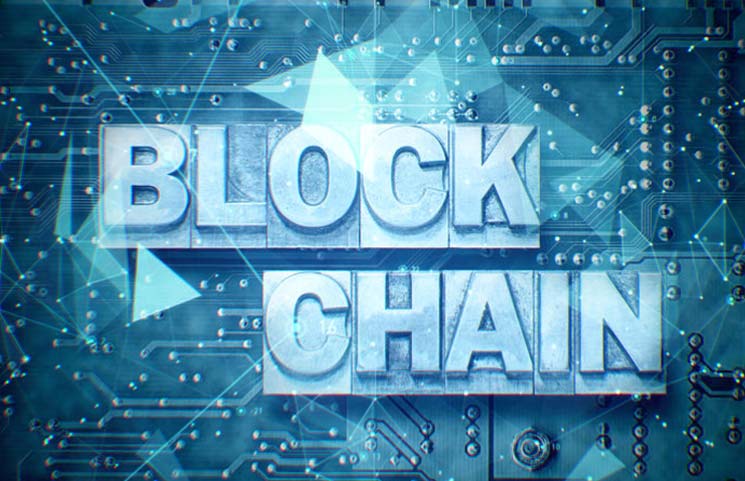
Is Blockchain the Answer to Banking System Issues?
It is evident that the banking system in its current state is flawed. The banking system relies too heavily on multiple third-party verification's as well as transferring services for each transaction. The jumble of the third-party services needs to be ironed out, and the best way to do that is through blockchain technology.
By using blockchain technology within the banking system, third-party organizations can be sidestepped. Not only is the blockchain technology useful in smaller banking systems, but it is also helpful for the most prominent and well-known financial institutions. The blockchain is transforming businesses globally by offering to perform various transactions securely in a peer-to-peer manner, cutting out the middleman altogether.
Due to the shabby current state of global banking, we've witnessed multiple government bailouts. These government bailouts are what has spawned the birth of cryptocurrencies. Even in the beginning, when Bitcoin first came on the scene the creator Satoshi, left a reference to the bailout from the London Times in BTC's genesis block, making it abundantly clear that this was his motivation for creating the cryptocurrency.
The First Bank: A Brief History

In order to understand how vital blockchain technology is over the current banking system, you need to understand a brief history of banking. You see in the beginning banks were used as a mean to store gold securely. In fact, the first bank was nothing more than a gold depository. Wealthy individuals would drop the gold off and be issued a receipt. This receipt would then be used around town to purchase items. When the banker of this institution realizes that people never came to collect their gold at the same time, he began to lend out other people's gold with an interest rate.
When the townspeople began to get suspicious of the banker and the wealth that he accumulated, they demanded to see the vault. To their surprise not only was everyone's gold within the vault, but the banker had also collected extra because of the interest that he was charging. After seeing the amount of interest that the banker had made, the wealthy individuals wanted in on the action as well. To this day banks now have to pay you a small interest on your holdings. However not much as changed since the birth of that first bank. It is still considered a third-party institution which makes a profit off of holding your funds.
A New Way

Of course, none of these steps are necessary any more thanks to blockchain technology. Because technology has changed and advanced so much over the last decade, it surprising that the banking system hasn't followed suit. It is apparent that the world cannot continue to bail out fraudulent bankers. Nor can we afford to run on a fiat-based financial system. If we incorporate blockchain technology, we could eliminate many of the banking problems that we see today.
Peer-to-Peer

The idea of peer to peer has no use with the banking system that relies heavily on a combination of verification's and other monitoring platforms to ensure your funds are sent. Did you know that each time you swipe your debit card, there is, are 30 different third-party institutions in place to complete that single transaction? Now multiply that with all the various shops you go to in the course of the day. A coffee at Starbucks, gas at the pump, takeout dinner, and paying the bills. Every transaction where your debit card is swiped goes through the same process.
First, your bank must check the balance to verify that you have the funds to spend. Next, the bank must verify the account where you are sending funds to ensure that it is correct. Once that is done, it has to interact with the merchant processing firms and check Visa or MC, and the list goes on just to make a single purchase. This explains why you can swipe your debit card at any given time, but when it comes to refunds, it can take weeks or even months to process.
The Transparency of Blockchain Technology

The beautiful thing about cryptocurrencies is that it eliminates the middleman. No longer do you have to jump through hoops or wait for third-party verification. Blockchain technology is transparent, which is why it makes it ideally suited for all financial services. There is never a question when it comes to blockchain technology due to its transparency. Anyone at any time can check a wallet on the blockchain. And if the funds are present, they are sent immediately to the individual or company that is involved with the transaction.
Sending Money Internationally

When it comes to sending large amounts of money internationally going through traditional routes of the banking institutions can take days and even weeks to complete. During that holding period, the money is inaccessible to both parties. It is common in the banking world for funds to be on hold for over a week.
However, with the use of blockchain technology, there is no waiting time. Funds are sent automatically regardless of the amount. The ability to send substantial funds through blockchain technology is a considerable advantage compared to the current banking system.
Imagine how much easier it would be if you are a large international company trying to send millions of dollars in capital internationally. With blockchain technology, you would be able to accomplish this task quickly and efficiently without the additional delays. The funds would be transferred more securely, and you would be able to avoid the losses that accumulate when converting your funds. After all, 1 million BTC and China is 1 million BTC in the United States.
Records and Tracking
![]()
Another beautiful thing about blockchain technology is that the funds are traceable and immutable. Hacking of the data is unheard of, yet it's easy to search for a single transaction within the chain. If the banking system integrated blockchain based technology issues like identity theft or disputed transactions would be swiftly dealt with in a timely fashion. There are some banks that are starting to see the advantages of this technology. So don't be surprised in the near future when many more banks will follow suit as the technology continues to advance.
Farewell to Credit Bureaus
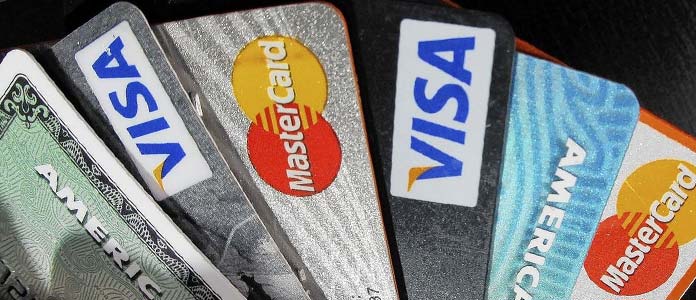
By incorporating a blockchain based system credit bureaus would be rendered useless due to the transparency of the technology. Anyone using the blockchain technology searching for a loan will easily be able to bring up their financial history and prove their ability to repay their loans.
Imagine being able to see your credit report anytime you want. As of right now, credit companies are only obligated to provide a free single yearly report. The credit bureaus thrive off the technology that is no longer required or needed.
Increased Security

When it comes to security, blockchain technology is light years ahead of the game. With an unhackable system and the redundant nature of the protocol, your funds are safe, secure, and at your fingertips.
A Blockchain Future

For the first time in history, a decentralized global economy is a reality. With the advantages of the blockchain technology, the central banking system will soon be put out to pasture. This explains why the financial institutions have been so vocal in their opposition towards cryptocurrencies. The people no longer want the long waiting periods for sending funds, nor the third-parties to be involved with their finances. A new day is dawning, and the financial institutions know their time is running short and efficiency will win in the end.
BlockChain & Smart Contact
Top 4 Questions To Ask If Your Business Needs Blockchain Technology
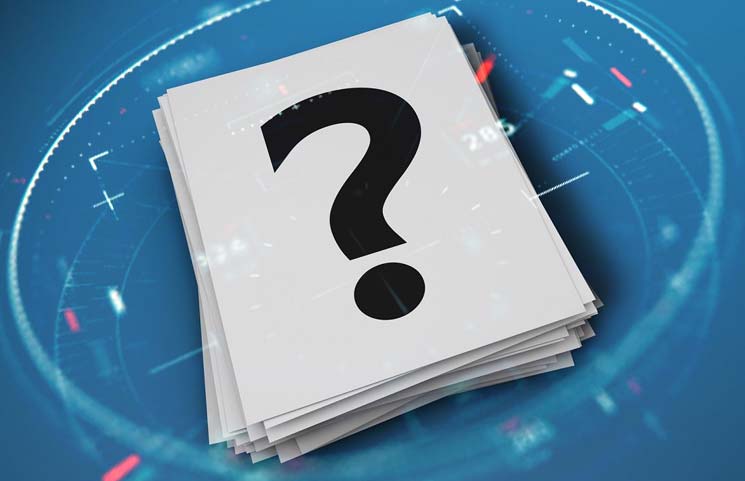
Is A Blockchain Right For Your Project?

Blockchain technology was introduced in 2008 by Satoshi Nakamoto, the pseudonymous creator of Bitcoins. This innovative data structure has since been used to create a wide variety of software ranging from electronic medical records to online voting because of its inherent security, decentralization, and flexibility. However, blockchains are not appropriate for all software applications, and many projects that deploy the technology are pushing it beyond its limits. Before undertaking a project using a blockchain, it's important that developers and investors thoroughly understand how this technology works and where its limitations lie.
What Is A Blockchain?

A blockchain is a permanent record composed of individual “blocks.” Depending on the application, the blocks could contain radically different information, but they typically include at least a timestamp and data about transactions or new data added. The defining feature of blockchains is that each block includes a cryptographic hash derived from the previous block, meaning that records cannot be altered without changing the entire ledger. Thus, blockchains can be shared widely throughout a network without risk of their data being corrupted. This inherent fault tolerance has made them a popular choice for a wide variety applications, including cryptocurrencies, electronic medical records, and copyright management.
Several related architectures have also developed, most notably sidechains and hyperledgers, which expand blockchain's features and improve its speed and security for certain applications. The profundity of blockchain technology is likely still far from being fully realized; Harvard professors Marco Iansiti and Karim Lakhani said in a 2017 paper that that the technology “has the potential to create new foundations for our economic and social systems.”
Does Blockchain Fit Into Your Business Needs
Third Parties

If your service relies on some centralized party to verify users' behavior, blockchains probably aren't the right option. The technology is inherently decentralized: it creates a permanent record with no broker or intermediary. When a user reports their action to the blockchain network, the blocks are verified as soon as the network can handle it and the action is recorded, regardless of whether or not an administrator approves.
Transaction Speed

There are several different ways blockchains verify their transactions, but virtually all of them require at least a few seconds, and some require several minutes or even hours. Users' actions can't be recorded instantly, because this would mean that any fraudulent party could corrupt the system, so blockchains require some sort of verification protocol; a wide variety of verification algorithms exist, but the most common are “proof of work” and “proof of stake.”
Since blockchain transactions require some time to guarantee fault tolerance, the data structure is still not appropriate for applications that require very fast verifications. However, solutions for faster verifications are in development, and it could become more feasible in the near future.
Data Storage
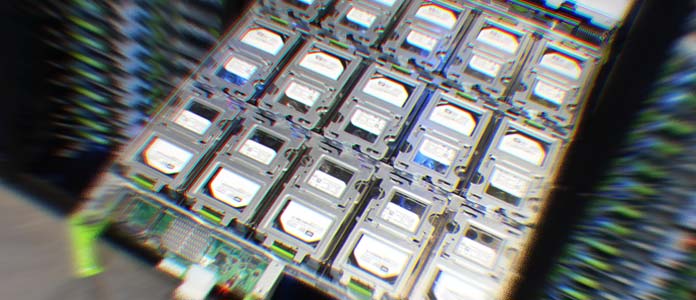
Blockchains aren't designed to store large amounts of data; they are intended to store small sets of information, with the tacit assumption that only a handful of “full” servers will host the entire corpus while “light” users verify new data. The entire Bitcoin blockchain is approaching 200 gigabytes, and even this includes only basic transaction information. If your project requires any substantial data storage, blockchains probably aren't appropriate.
Public vs. Private Blockchains

Private Blockchains:
Private blockchains – which offer some control over their access and functionality – are increasingly popular, and are ideal for many applications that don't need a public record of all actions or which require some control of who can access them.
Public Blockchains:
Public blockchains, like Bitcoin's, merely implement a protocol and the community of users is left to verify its transactions. On the other hand, private blockchains can offer some control over who can add records, and the information can be kept entirely hidden. Thus, private blockchains are perfect for many corporate applications which could embrace the technology's security and stability, but don't need the public and decentralized aspects.
Blockchain Technology in Conclusion
As blockchain technology continues to develop, it will surely find more applications in places its creators never considered. By working to understand blockchains and appreciate this nascent technology for what it is, software developers and entrepreneurs can create powerful solutions that change the world.
BlockChain & Smart Contact
Etherscan: How To Use Ethereum’s Blockchain Explorer & Analytics?
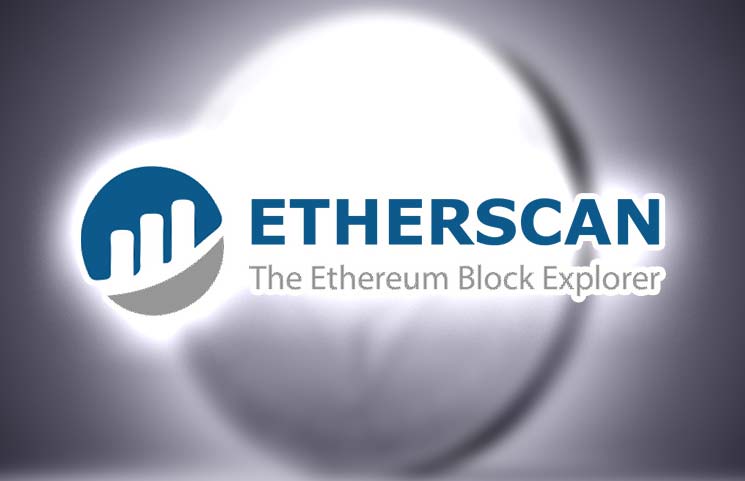
An intuitive and valuable block explorer, Etherscan is also an Ethereum analytics platform. While seemingly a bit technical for some cryptocurrency users, a block explorer is simply a search engine that allows users to search for, confirm and validate transactions that have occurred on a blockchain.
Etherscan is the principal block explorer for the Ethereum blockchain network. Still a sleeping giant, Ether’s ERC-20 token protocol has been employed in the vast majority of ICOs. Now established as the malleable foundation of much blockchain exploration and copious development overall, the Ethereum platform and its ERC-20 token play massive albeit often silent roles in the crypto market.
An independently operated project, Etherscan is the product of a collective of passionate developers, fired up about the future of blockchain technology. With expertise centered on “decentralized information and infrastructure applications” enabled by the Ethereum platform, the team has put a detailed, polished site together for enthusiasts.
What Is Etherscan?
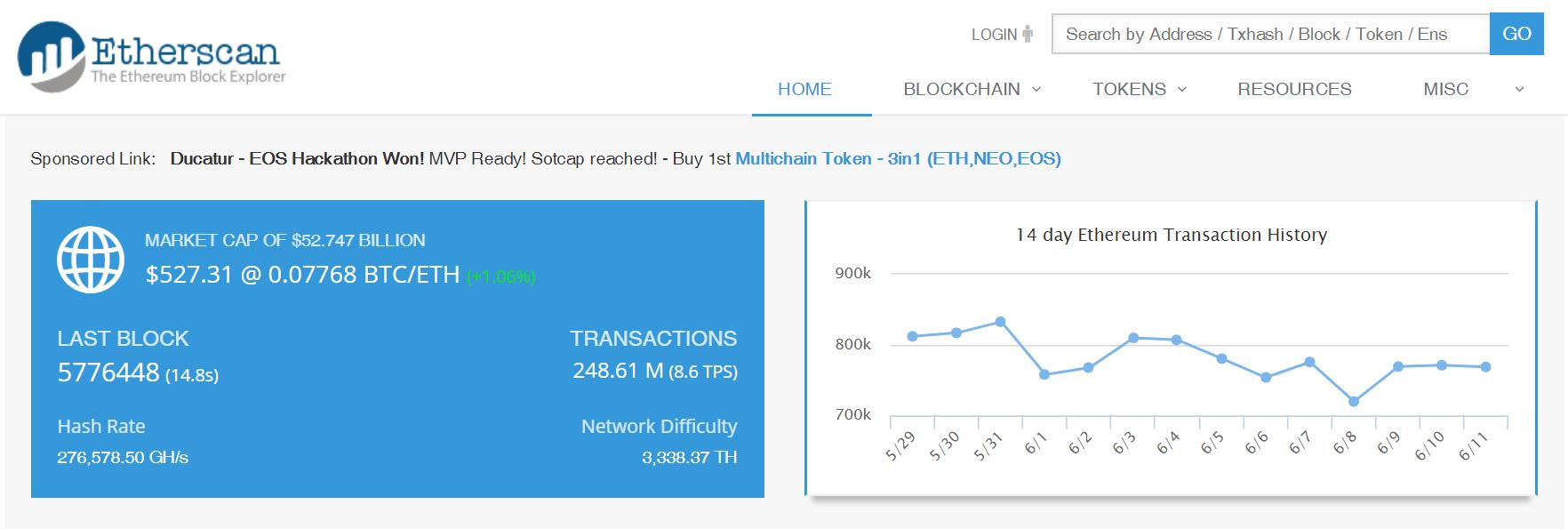
Etherscan is an independent project, and joins the ranks of numerous other Ethereum block explorers already out there. The company receives no funds nor does it take management or direction from the Ethereum project.
In a nutshell, Etherscan indexes the Ethereum blockchain. Indexing this decentralized, public ledger, Etherscan then makes this information available on its site. If anything, a step away and a boon for users intimidated by very technical issues, Etherscan draws intel from the decentralized database that the Ethereum blockchain constitutes. Subsequently indexing and also simplifying it, the app then presents the information on the Etherscan site in an accessible, transparent manner. The site’s essential aim is to maintain searchability on every single transaction on the Ethereum blockchain.
Etherscan is not a trading platform or brokerage, nor does the company supply a wallet facility or any other such user facility. For the reassurance of users, the company does not store users’ private keys. Possibly for the benefit of newcomers or tentative users, the company states onsite that they have no control over Ethereum network transactions.
Etherscan is a librarian. If you want to know where to find a certain book, or in this case blockchain transaction, log on.
The team punt their “load-balanced robust API services” that users can employ to serve as data feeds for Ethereum blockchain information, or build decentralized apps.
Etherscan Growing Through Fintech Services
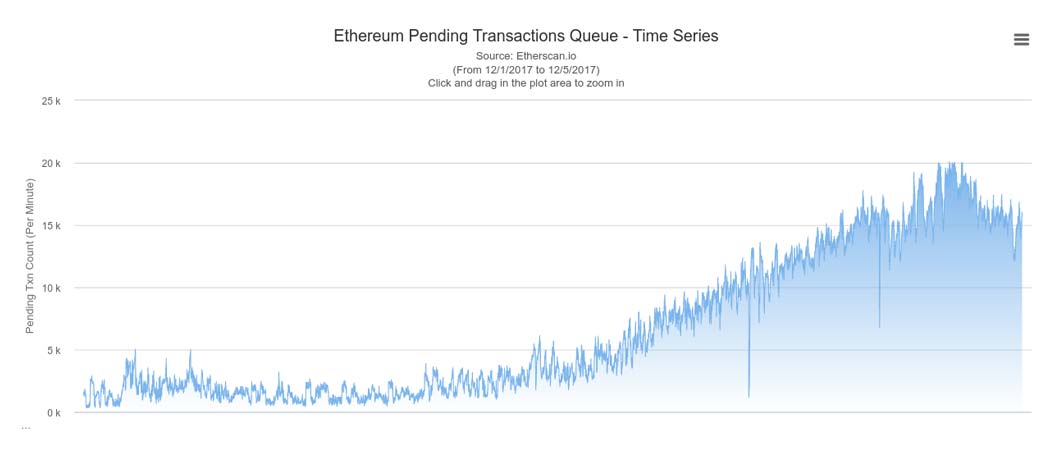
The project faces many competitors and is not a sole appointee of Ethereum’s, nor does it have any exclusivity in conducting its business. Nonetheless, Etherscan fills the niche of ‘tech geek build’ made good for the citizenry. While there are more colorful and even smarter sites out there, Etherscan is a sweet spot combination of logical and smart presentation with a host of intel that is pertinent, useful and eminently valuable to users.
Anyone looking to research Ethereum blockchain transactions will find the platform comprehensive, easy to use and most importantly riddled with small touches only a fellow user would have built in. An organic emergence from the lives of the development team, drop down menus feature rewardingly useful information.
There is a large amount of user-aiding intel to be found onsite, starting with the FAQs. Experienced users will recognize the cautionary tone that permeates the site copy. The team has done well to make things plain to those perhaps employing a block explorer for the first time. They also manage not to weigh more experienced users down with irrelevant information, having built the site with an intuitive flow.
Snippets such as that explaining the “irreversible nature of digital currency protocols,” meaning that “transactions can neither be canceled nor reversed once they have been sent,” abound.
While not overdone, they speak volumes for the intent and integrity of the project because, as they point out on the site:
“As a free blockchain explorer, we can only provide and display information on transactions on the Ethereum blockchain. Etherscan is a read-only GUI (graphic user interface) to the Ethereum blockchain.”
Such statements are not obligatory for a block explorer project, yet made onsite in a bid to steer users through what is essentially an ebook version of a blockchain.
Etherscan Ethereum's Blockchain Explorer Conclusion
Clearly listening and looking out for users, the site’s ethos is well met by its overall build and the convenience it provides. Statements such as “As much as we wish to help, Etherscan.io would not be able to recover or aid in the recovery of your funds,” the project’s tone is emblematic of the best of blockchain technology rolled out for the world’s citizenry.
With a visible willingness to aid users beyond their call, Etherscan’s team have built a block explorer that is so far faultless, easy to use and quick about it as well.
Any user looking for access to the Ethereum blockchain’s history would do well to employ Etherscan. Not only is the essence of the app immediately available, users are also surrounded by helpful, relevant information while on the site.










